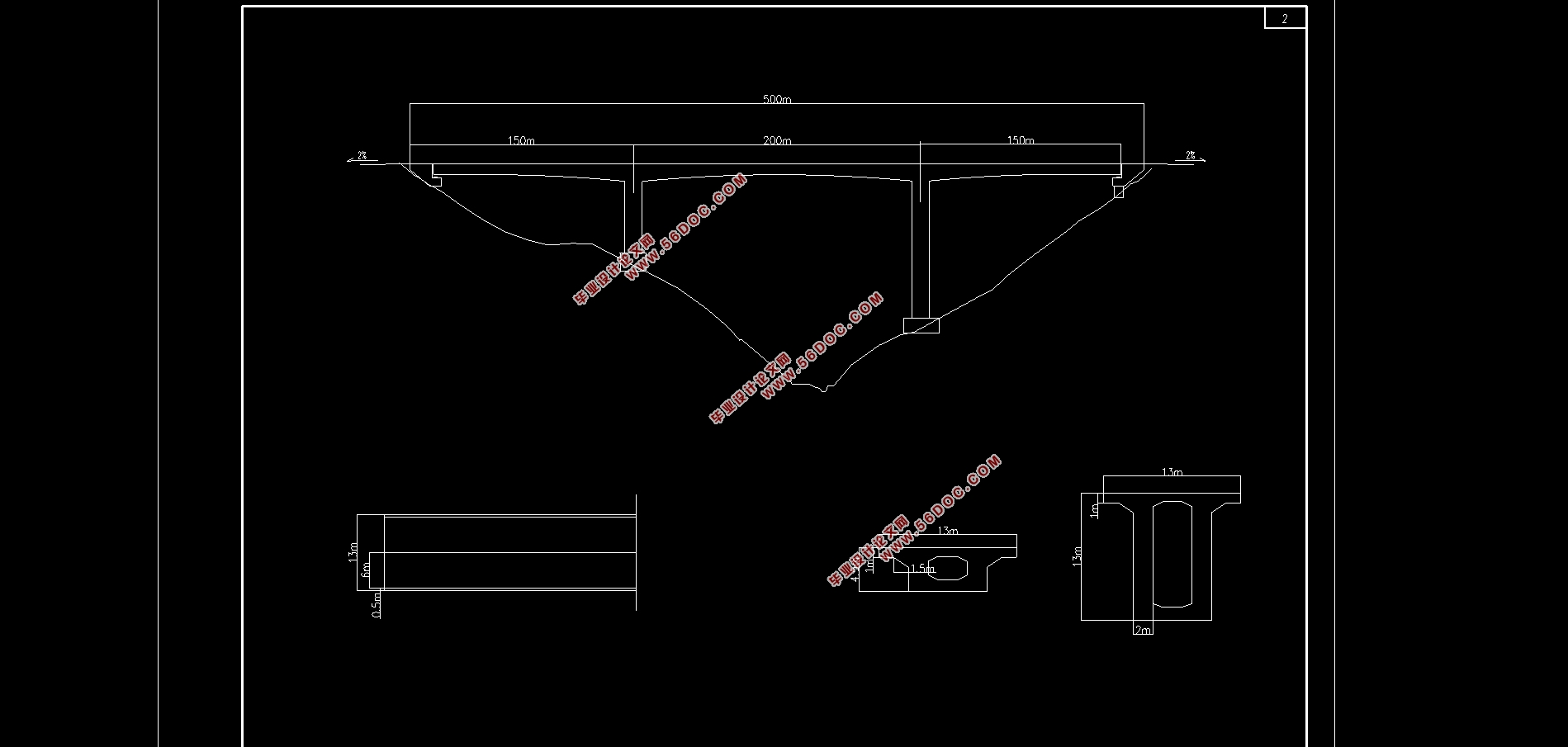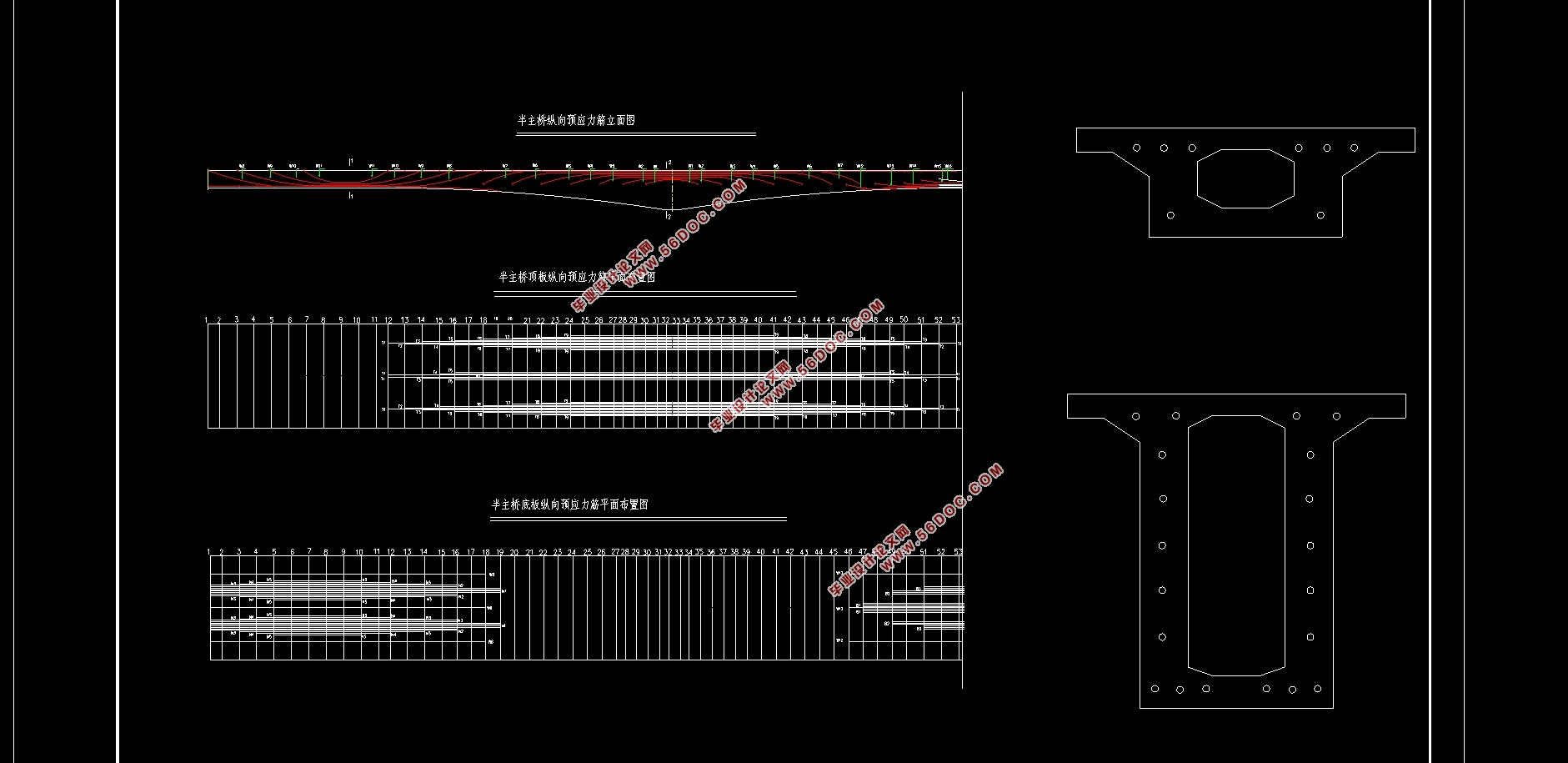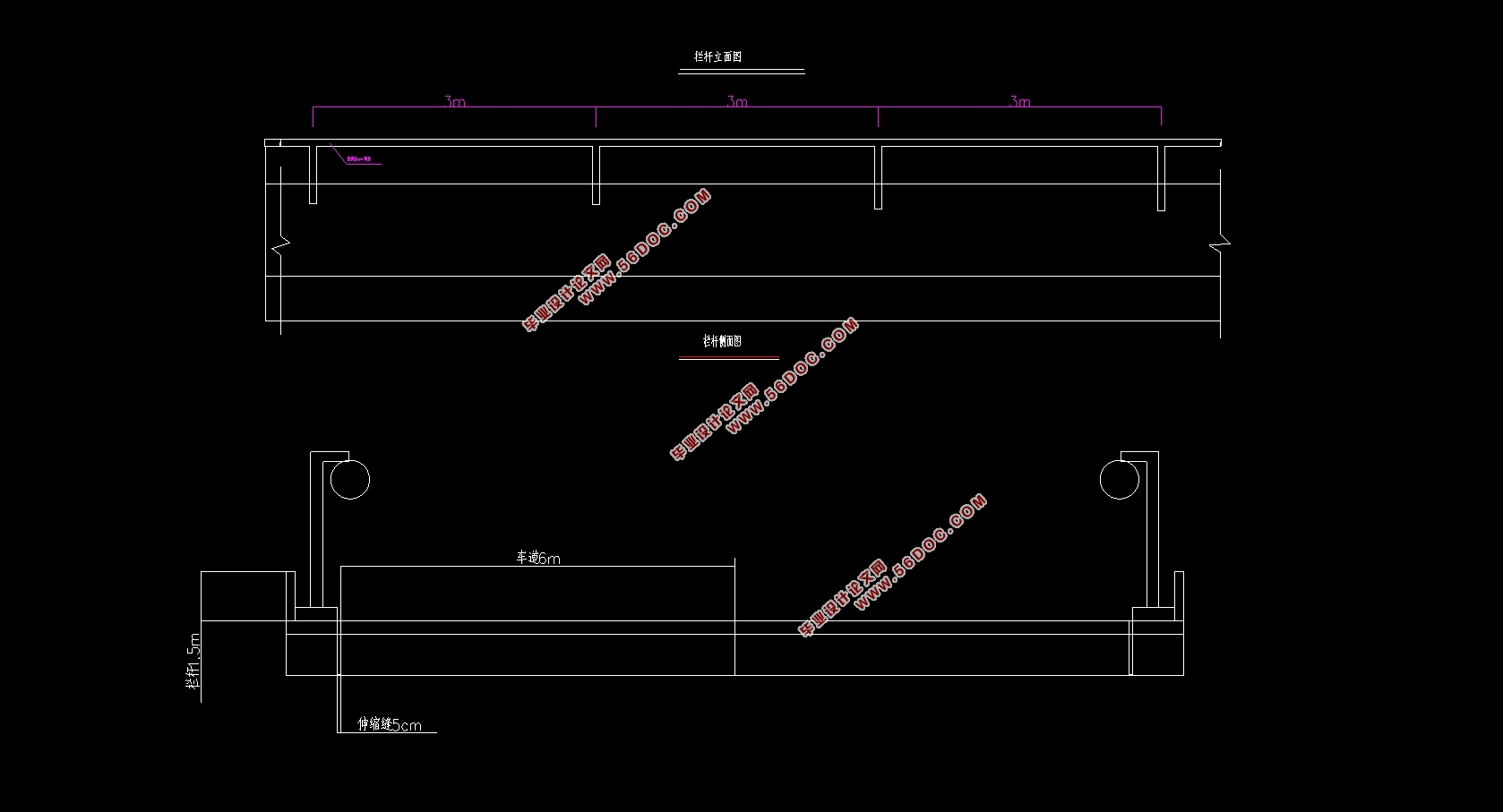全长500m三跨连续钢构桥榕九大桥设计(150m+200m+150m)(含CAD图)(任务书,开题报告,外文翻译,论文说明书11000字,CAD图纸5张)
摘 要
本文借助有限元软件Midas对所给的地段进行桥梁建模、结构设计和验算。
首先我们根据我们的任务要求来构思桥梁的总体设计,然后将前面拟定的方案作出桥型并且挑选出最合适的桥梁构造。这样在确定了桥梁的总体布置之后,我们将桥梁主要的尺寸定下来。
接下来就可以用Midas对桥梁进行建模操作,将我们所算的荷载施加之后计算出主梁的内力图。之后根据桥梁的内力图布置预应力钢筋。布置完后我们就可以验算桥梁的各个截面是否稳定从而修改我们的布筋方案。验算之后接下来要做的是确定下部结构的基本尺寸。
做完这些,最后我们把施工方案选好和施工方面的一些要点提出来。
本文的特色:通过对设计每一步阶段的介绍和记录,还原设计者的思路与设计每一个阶段的真实情况。
关键词:桥梁设计;有限元;结构设计;受力检验
Abstract
In this paper, the finite element software Midas is used to model, design and check the bridge in the given area.
First, we conceive the overall design of the bridge according to our task requirements, then make the bridge type and select the most suitable bridge structure. In this way, after determining the overall layout of the bridge, we will determine the main dimensions of the bridge.
Next, we can use Midas to model the bridge and calculate the internal force diagram of the main girder after applying the calculated load. Then, according to the internal force of the bridge, the prestressing steel bars are arranged. After layout, we can check the stability of each section of the bridge and modify our reinforcement scheme. After checking, the next thing to do is to determine the basic size of the underlying structure.
Finally, we put forward some key points in the selection of construction plan and construction.
Key Words:Bridge Design; Finite Element; Structural Design; Force Testing
技术标准
(1)计算行车速度:100Km/h。
(2)荷载:公路I级。
(3)桥宽:桥梁与分离式路基同宽为13m,左右线分离。(12m(行车道)+2×0.5m(防撞护栏))。
(4)桥面横坡:单向2%。
桥梁全长为500m,单跨最长为200m归类属于特大桥。特大桥中常用的桥梁形式有连续钢构桥、拱桥、斜拉桥等。各类桥型的优缺点如下:
1.连续钢构:它的特点是墩梁固结。主墩具有柔性可以起到支撑作用同时削弱梁纵向的变形,可以配合大跨度高墩梁。高墩具有一定柔度与梁固结之后可以减轻温度影响下混凝土发生的位移。
(1)跨径布置:150m+200m+150m,全长500m。
(2)结构构造:构建三跨连续钢构桥,梁截面采用变截面的单箱单室预应力混凝土箱形截面,支点梁高为13m,跨中梁高4.5m。
(3)桥墩及基础:由于桥面较高采用双薄壁桥墩。
(4)施工方案:平衡悬臂施工法。





目录
第1章 工程概况 1
1.1 目的及意义 1
1.2 设计资料 1
1.2.1 技术标准 1
1.2.2 设计规范 1
1.2.3 注意事项 1
第2章方案比选 2
2.1 桥梁设计原则 2
2.2 结构形式 2
2.3 拟定方案 4
2.4 桥跨结构图示及主要尺寸拟定 5
第3章 荷载内力计算 7
3.1 恒载内力计算 7
3.1.1 计算方法 7
3.1.2 计算结果 7
3.2 活载内力计算 8
3.3 内力组合 9
第4章 预应力钢束设计 12
4.1 计算原理 12
4.2 预应力钢束的布置 13
4.2.1 预应力钢束布置原则 13
4.2.2 预应力钢束的布置 13
第5章 PSC验算结果 17
5.1 施工阶段正截面法向压力验算 17
5.2 使用阶段正截面压应力验算 21
5.3 使用阶段正截面抗裂验算 22
5.4 使用阶段斜截面抗裂验算 24
5.5 使用阶段斜截面正压应力验算 26
5.6 使用阶段正截面抗弯验算 27
5.7 施工阶段斜截面抗剪验算 30
第6章 下部结构设计 34
第7章 施工组织设计 36
7.1 悬臂施工的特点 36
7.2 悬臂拼装法步骤 36
7.3 施工控制 36
参考文献 37
总结 38
致谢 39
|











